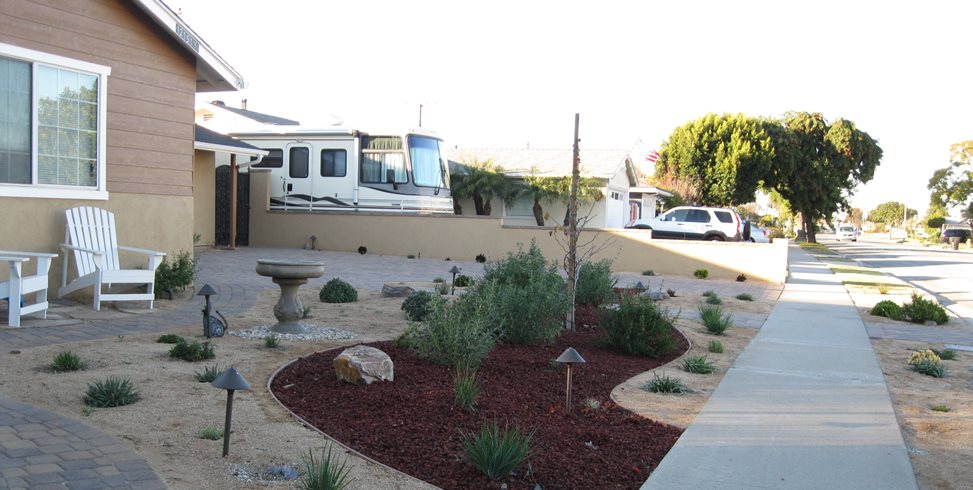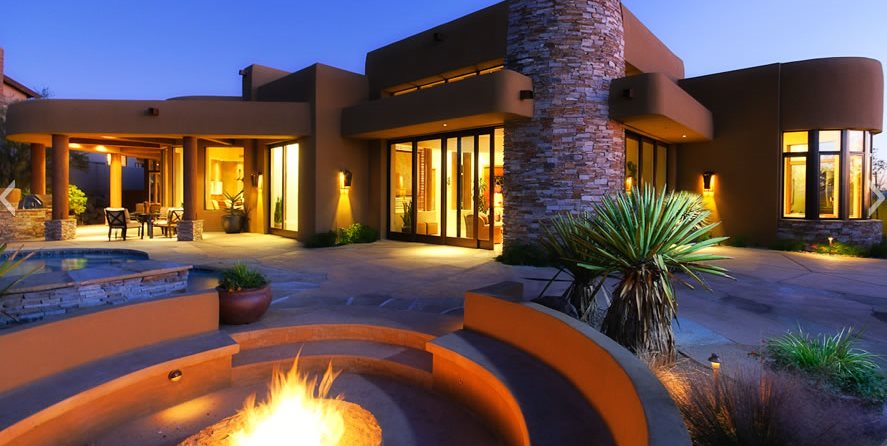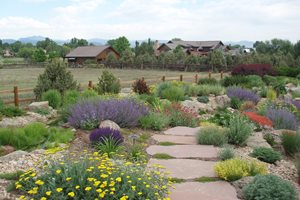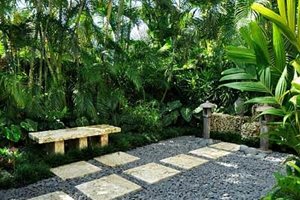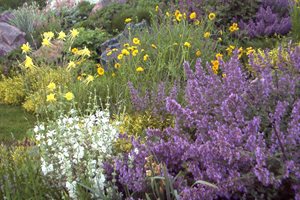Xeriscape Cost
Discover which elements of a xeric landscape have the biggest effect on costThe cost of xeriscaping depends entirely on the vision you and your designer come up with, and doesn't need to cost any more than a traditional landscape if you don't want it to. In general, the elements that drive up the cost of a xeriscape are the same elements that drive up the cost of any other style of landscaping. Here, professional landscapers share their tips about where you can save money, and where it's worth it to splurge.
Elements that affect cost
More hardscape.
Anything made of stone, pavers, or concrete will cost more. "Hardscape is always more expensive than plants," says Elizabeth Przygoda-Montgomery of Boxhill Landscape Design in Tucson, AZ. However, hard surfaces take very little maintenance in comparison to lawn or plantings, so you'll save on time and water in the end.Less lawn.
"A landscape with less lawn will be more expensive to start with because lawn is cheap to install," says Mike Woods of J&S Landscape in Longmont, CO. However, he points out that the ongoing costs for lawn are much higher. "Look at the cost for irrigating a lawn, mowing, fertilizing - all of that maintenance never ends. Planting beds take a smaller amount of maintenance, and that type of gardening is much more fun."Drip irrigation.
A drip irrigation system, as is used to establish a xeriscape and help the plants through the hottest days of summer, is either the same price or less money to install than a sprinkler system for lawn. It's also cheaper to run over time, because it provides water exactly where the plants need it, with no waste.Larger plants.
Plants in a 5-gallon pot can cost 3 to 5 times more than a plant in a 1-gallon pot, and the cost goes up exponentially from there. Plants which started in a larger pot also cost more to plant and establish, since you'll need to dig a bigger hole and provide more water during those critical first years.Rainwater harvesting.
Many people choose to collect seasonal rainfall, and use rain barrels or tanks to store it so this free water can be used throughout the growing season. The initial cost varies from less than $100 for a tiny DIY solution, to $8000 or more for large, professionally installed underground storage tanks that are hooked into your drip irrigation system.Custom amenities.
"With any garden, the cost depends on what you want," says Rama Nayeri of Creations Landscape Design in Tustin, CA. "If you desire a barbecue area, you will end up spending more money having something custom-made rather than purchasing a freestanding unit."
There are other considerations to keep in mind when choosing how to landscape. "Xeriscaping isn't just about the dollars you spend, but the environmental cost to our decisions," says Greg Frugoli of Ecotones Landscapes in Cambria, CA. "Mowers are notoriously polluting and noisy," he says, "and there are huge benefits to using less water, fertilizer, and other materials in the landscape."
To spend or not to spend?
In a sea of landscaping decisions, how do you know what's worth spending money on and which splurges you should skip? These are personal decisions and will be guided both by your budget and by how you plan to use the space, however some areas of the landscape will give you more bang for your buck than others.
Hardscaping.
When you're using less lawn, it becomes even more important to provide a place for you and your family to relax and spend time together. Even if your budget only stretches to a small stamped concrete or crushed gravel patio and pathway, this is absolutely a place to spend money because you'll notice and reap the benefits of the space every day during good weather.
Less lawn.
Using less lawn may cost more in upfront installation costs, but you'll save money every day on water, fertilizer, gasoline and lawn care services. In addition, many municipalities actually provide a rebate for every square foot of lawn you remove, which reduces the sting of that upfront cost. The verdict? Get rid of as much as you can.
Drip irrigation.
If you're retired or work from home, you may be tempted to skip the drip system, but most landscapers consider an automated drip system a must for developing the deep root systems that will eventually allow your plants to fend for themselves. Drip systems are more water-efficient than hand watering, too. When hand watering, there's a lot of runoff and waste, but a drip system delivers the exact amount of water in the exact right spot.
Larger plants.
For plants that grow taller than 5 feet at maturity, starting with larger specimens is worth it so you don't have to wait 10 years for your landscaping to start taking shape. However, for groundcovers, perennial flowers, and small shrubs, buying larger specimens is usually a waste of money. "After the first year, the 1-gallon plant and the 5-gallon plant will look almost the same in terms of height and width," says Nayeri.
Rainwater harvesting.
The benefit of rainwater harvesting is that you can reduce your reliance on the city water supply. While you're unlikely to recoup your financial investment at current water prices, you can certainly feel good knowing that you're doing your part to preserve water. If budget's an issue, check into whether your city or local water company offers any rebates, or consider a smaller or DIY solution.
Custom amenities.
Custom fire pits, outdoor kitchens, big water features and other high-end additions can set the tone for luxurious parties and fun gatherings with friends. However, if your budget is pinched, talk with your designer about creating a design that will incorporate some of these special features over time. That way, you can install most of your landscape right now, and make do with premade barbecues, fire pits, etc. until the time is right to upgrade.

 Backyards
Backyards
 Front Yards
Front Yards
